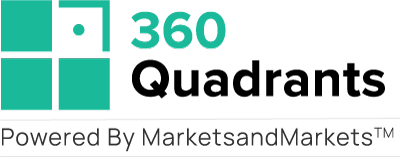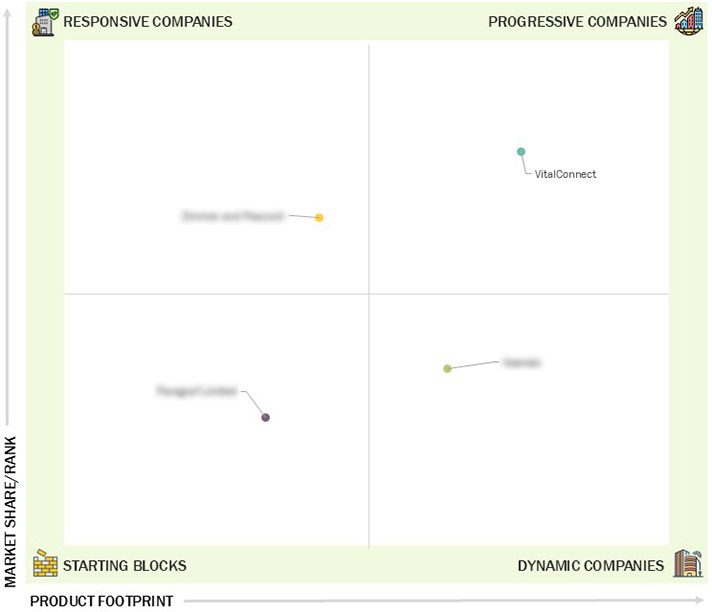Comparing 4 vendors in Biosensors Startups across 0 criteria.
The biosensors market is advancing rapidly, driven by rising demand for point-of-care diagnostics, wearable health monitoring, and real-time data analysis. These semiconductor-based devices convert biological responses into electrical signals, enabling quick and accurate detection of various health conditions. Applications span home diagnostics, environmental monitoring, food safety, and biodefense. Innovations in nanotechnology, IoT integration, and electrochemical sensing are enhancing performance and accessibility. Despite commercialization challenges, biosensors are becoming essential tools for proactive healthcare and smart diagnostics.
Market Leadership Quadrant
1.1 Study Objectives
1.2 Market Definition
1.2.1 Inclusions and Exclusions
1.3 Study Scope
1.3.1 Markets & Regions Covered
1.3.2 Years Considered
1.3.3 Currency Considered
1.3.4 Units Considered
1.4 Stakeholders
1.5 Summary of Changes
2.1 Introduction
2.2 Market Dynamics
2.2.1 Drivers
2.2.1.1 Emergence of Nanotechnology-based Biosensors
2.2.1.2 Technological Advancements in Recent Years
2.2.1.3 Increasing use of Biosensors to Monitor Glucose Levels in
Individuals with Diabetes
2.2.1.4 Supportive Government Initiatives for Diagnostics
2.2.2 Restraints
2.2.2.1 Reluctance to Adopt New Treatment Practices
2.2.2.2 High Cost of Biosensor R&D
2.2.3 Opportunities
2.2.3.1 Emerging Markets in Developing Countries
2.2.3.2 Rising Food and Environmental Monitoring Applications
2.2.3.3 Growth Opportunities in Wearables
2.2.4 Challenges
2.2.4.1 Regulatory Barriers and Long Certification & Approval Cycles
2.3 Value Chain Analysis
2.4 Ecosystem Analysis
2.5 Trends/Disruptions Impacting Customers’ Businesses
2.6 Technology Analysis
2.6.1 Key Technologies
2.6.1.1 Multiplexed Biosensors
2.6.2 Complementary Technologies
2.6.2.1 AI-integrated Biosensing Platforms
2.6.3 Adjacent Technologies
2.6.3.1 Drug Delivery Systems
2.7 Investment and Funding Scenario
2.8 Impact of Gen AI/AI on Biosensors Market
2.9 Patent Analysis
2.10 Porter’s Five Forces Analysis
2.10.1 Intensity of Competitive Rivalry
2.10.2 Threat of Substitutes
2.10.3 Bargaining Power of Buyers
2.10.4 Bargaining Power of Suppliers
2.10.5 Threat of New Entrants
2.11 Key Conferences and Events, 2025–2026
2.12 Impact of US Tariffs—Biosensors Market
2.12.1 Introduction
2.12.2 Key Tariff Rates
2.12.3 Price Impact Analysis
2.12.4 Impact on Countries/Regions
2.12.4.1 US
2.12.4.2 Europe
2.12.4.3 Asia Pacific
2.12.5 Impact on Applications
2.12.5.1 Point of Care (POC)
2.12.5.2 Home Diagnostics
3.1 Overview
3.2 Strategies Adopted By Key Players, 2021–2024
3.3 Revenue Analysis, 2022–2024
3.4 Market Share Analysis, 2024
3.5 Company Valuation and Financial Metrics
3.6 Brand/Product Comparison
3.7 Company Evaluation Matrix: Startups/SMEs, 2024
3.7.1 Progressive Companies
3.7.2 Responsive Companies
3.7.3 Dynamic Companies
3.7.4 Starting Blocks
3.7.5 Competitive Benchmarking of Startups/SMEs
3.7.5.1 Detailed List of Key Startups/SMEs
3.7.5.2 Competitive Benchmarking of Key Startups/SMEs
3.8 Competitive Scenario
3.8.1 Product Launches, Approvals, and Enhancements
3.8.2 Deals
3.8.3 Expansions
4.1 VITALCONNECT
4.1.1 Business overview
4.1.2 Products/Solutions/Services offered
4.1.3 Recent developments
4.2 XSENSIO
4.2.1 Business overview
4.2.2 Products/Solutions/Services offered
4.2.3 Recent developments
4.3 ZIMMER AND PEACOCK
4.3.1 Business overview
4.3.2 Products/Solutions/Services offered
4.3.3 Recent developments
4.4 PARAGRAF LIMITED
4.4.1 Business overview
4.4.2 Products/Solutions/Services offered
4.4.3 Recent developments


 MedTech Dive
MedTech Dive
 Feb 2025
Feb 2025

